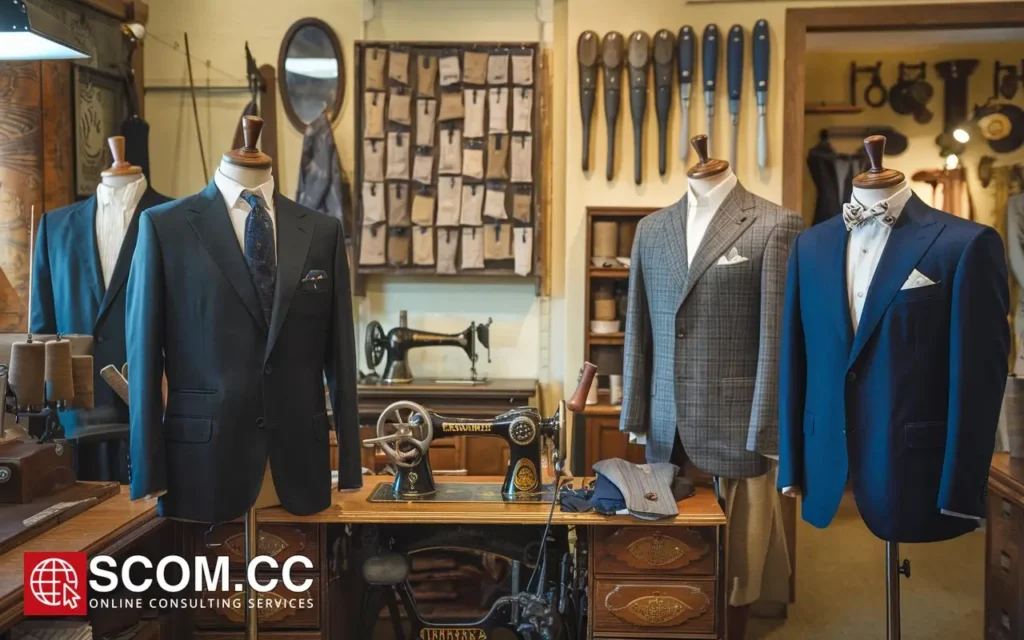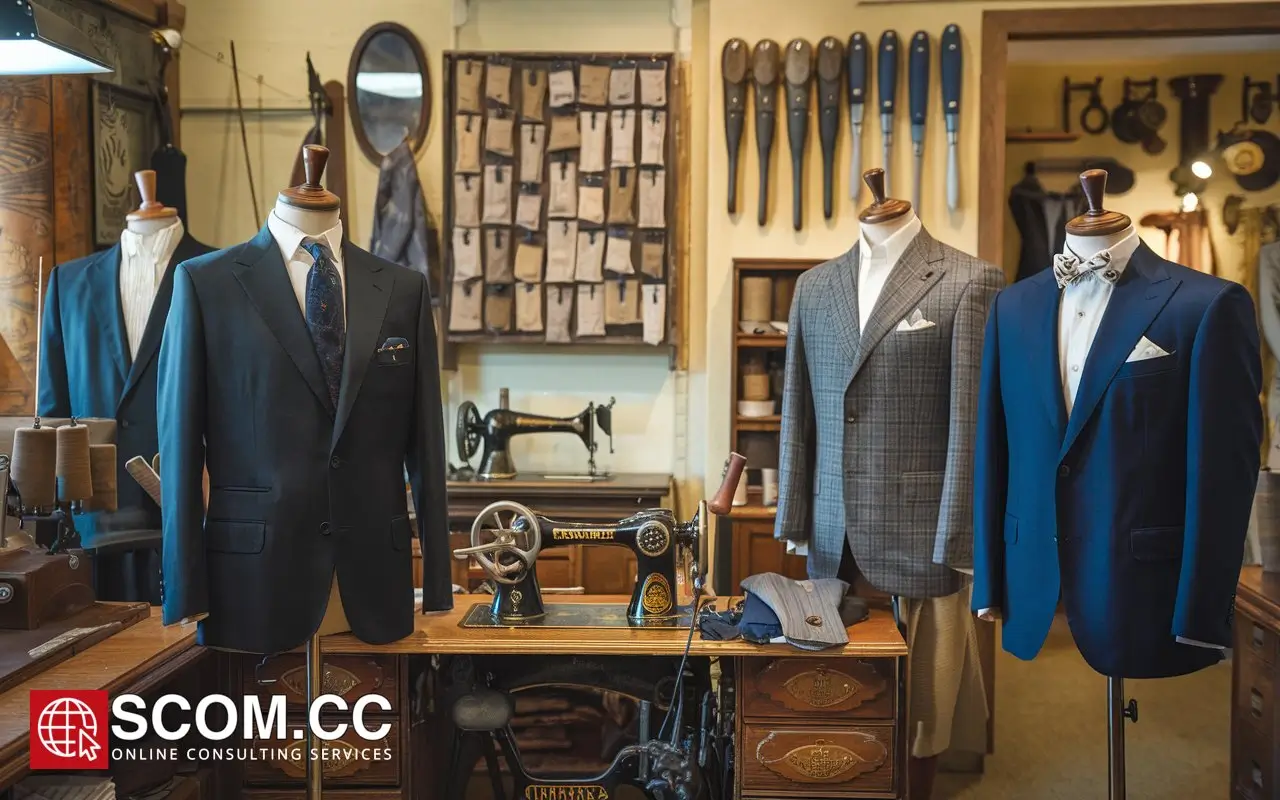How Did Tailoring Adapt to Changing Social and Economic Conditions?

- How Did Tailoring Adapt to Changing Social and Economic Conditions?
- Early Tailoring: Exclusivity and Craftsmanship
- Industrial Revolution: The Rise of Ready-to-Wear
- 20th Century: Responding to Wars and Social Change
- Modern Tailoring: Technology and Sustainability
- Conclusion
-
Frequently Asked Questions (FAQ)
- 1. How did tailoring start as an exclusive craft?
- 2. What impact did the Industrial Revolution have on tailoring?
- 3. How did World Wars influence tailoring practices?
- 4. How did social movements in the 20th century change tailoring?
- 5. What role did economic booms and recessions play in tailoring trends?
- 6. How has modern technology affected tailoring?
- 7. How is tailoring addressing sustainability and globalization?
The craft of tailoring is deeply intertwined with the social and economic conditions of its time. Throughout history, tailoring has evolved not just as an art form, but as a reflection of societal changes, economic pressures, and technological advancements. From the luxurious bespoke suits of the aristocracy to the rise of ready-to-wear clothing, tailoring has continually adapted to meet the needs of its clientele. In this article, we explore how tailoring has responded to shifting social norms, economic fluctuations, and technological progress, shaping and being shaped by the world around it.
Early Tailoring: Exclusivity and Craftsmanship
Tailoring as a Status Symbol
In its early stages, tailoring was a highly exclusive craft, catering primarily to the wealthy elite. Custom-made garments were seen as a symbol of status and refinement, a clear marker of social standing. Tailors worked meticulously with expensive materials like silk, velvet, and fine wool to create elaborate and personalized garments. The labor-intensive nature of early tailoring meant that it was a luxury only the affluent could afford.
Guilds and the Protection of the Craft
During the medieval and Renaissance periods, tailoring was protected by guilds, which regulated the profession and ensured the quality of the work. These guilds played a crucial role in maintaining the exclusivity of the craft, restricting access to the knowledge and skills needed to become a tailor. The apprenticeship system further reinforced the notion that tailoring was a specialized craft reserved for a select few.
Industrial Revolution: The Rise of Ready-to-Wear
Mass Production and Democratization of Fashion
The Industrial Revolution in the late 18th and early 19th centuries brought about significant changes in the tailoring industry. Advances in machinery and manufacturing processes allowed for the mass production of clothing, leading to the rise of the ready-to-wear industry. This shift democratized fashion, making tailored styles accessible to a broader population. While bespoke tailoring remained a symbol of luxury, off-the-rack clothing became the norm for the growing middle class.
Economic Shifts and Tailoring Practices
The Industrial Revolution also introduced economic fluctuations that impacted tailoring practices. The rise of industrial capitalism created a new class of wealthy individuals who sought to distinguish themselves through their attire. This demand for luxury clothing fueled the growth of high-end tailoring shops in major cities like London, Paris, and New York. At the same time, the working class needed durable and affordable clothing, leading to the development of workwear and uniforms produced on a large scale.
The Impact of World Wars on Tailoring
The World Wars had a profound impact on tailoring, as discussed in the previous section. Material shortages, rationing, and the need for functional clothing led to the rise of utility clothing and military-inspired fashion. Tailors had to adapt to these constraints by finding creative ways to work with limited resources. The wars also accelerated the trend towards simplified designs and practicality, which continued to influence fashion in the post-war years.
The 20th century also saw significant social movements that reshaped tailoring practices. The rise of women’s liberation, for instance, led to changes in women’s fashion, with tailored suits and trousers becoming more acceptable in professional and social settings. The civil rights movement and the counterculture of the 1960s challenged traditional norms, leading to more inclusive and diverse expressions of fashion. Tailors began to cater to a wider range of body types, identities, and personal styles.
Economic Booms and Recessions
Throughout the 20th century, economic booms and recessions played a crucial role in shaping tailoring trends. During periods of economic prosperity, there was a resurgence in demand for luxury tailoring and high-end fabrics. Conversely, during recessions, consumers turned to more affordable and versatile clothing options. Tailors had to navigate these economic cycles by adjusting their offerings, balancing quality with cost-effectiveness.
Modern Tailoring: Technology and Sustainability
The Digital Revolution and Customization
The digital revolution has brought about a new era of tailoring, characterized by customization and technology-driven solutions. Online tailoring services allow customers to design and order custom garments from the comfort of their homes. 3D body scanning technology has made it easier for tailors to achieve precise fits without in-person measurements. This blend of technology and craftsmanship has expanded the reach of tailoring, making it more accessible to a global audience.
Sustainability and Ethical Tailoring
In recent years, the fashion industry has faced increasing scrutiny over its environmental and ethical practices. As a result, there has been a growing trend towards sustainable and ethical tailoring. Consumers are becoming more conscious of the environmental impact of their clothing choices, leading to a resurgence in demand for quality, durable garments that are made to last. Tailors are responding by prioritizing sustainable materials, minimizing waste, and offering repair and alteration services to extend the life of garments.
Adapting to Globalization
Globalization has also had a significant impact on tailoring. While it has introduced competition from mass-produced clothing manufacturers in low-cost regions, it has also created opportunities for tailors to reach international markets. Luxury tailoring brands have expanded globally, while smaller tailoring shops have embraced e-commerce to attract customers from around the world. This shift has forced tailors to adapt their business models, offering unique services and emphasizing the quality and craftsmanship that set them apart from mass-produced alternatives.
Conclusion
The history of tailoring is a testament to the craft’s ability to adapt to changing social and economic conditions. From its origins as an exclusive service for the elite to its evolution into a globally accessible industry, tailoring has continuously responded to the needs of society. The Industrial Revolution, World Wars, social movements, and technological advancements have all played a role in shaping the tailoring practices we see today. As we move forward, the industry will continue to evolve, driven by trends towards sustainability, customization, and globalization. In the ever-changing world of fashion, tailoring remains a symbol of quality, resilience, and adaptability.
Summary Table: How Did Tailoring Adapt to Changing Social and Economic Conditions?
| Period | Key Changes in Tailoring | Social and Economic Factors |
|---|---|---|
| Early Tailoring | - Exclusivity and craftsmanship - Guild protection | - Tailoring as a status symbol - Guilds regulating the craft |
| Industrial Revolution | - Rise of ready-to-wear - Mass production and democratization | - Advances in machinery - Growth of middle class - Economic shifts |
| 20th Century - World Wars | - Utility clothing - Military-inspired fashion | - Material shortages - Rationing - Functional clothing demands |
| Social Movements (20th Century) | - Women's suits and trousers - Inclusive tailoring | - Women's liberation - Civil rights movement - Counterculture |
| Economic Booms & Recessions | - Luxury tailoring during booms - Affordable options in recessions | - Economic cycles impacting consumer behavior |
| Modern Tailoring | - Customization via digital platforms - Sustainable practices | - Digital revolution - Environmental and ethical consciousness |
| Globalization | - Expansion of luxury brands globally - E-commerce tailoring | - Global competition - International market reach |
Frequently Asked Questions (FAQ)
1. How did tailoring start as an exclusive craft?
Tailoring began as a craft for the wealthy elite, with custom-made garments being a symbol of status and refinement. It was protected by guilds that regulated the profession, ensuring only a select few had access to the necessary skills and knowledge.
2. What impact did the Industrial Revolution have on tailoring?
The Industrial Revolution brought mass production and the rise of ready-to-wear clothing, making tailored styles more accessible to the growing middle class. This period also saw economic shifts that impacted both luxury tailoring and workwear production.
3. How did World Wars influence tailoring practices?
World Wars introduced material shortages, rationing, and a need for practical clothing, leading to utility clothing and military-inspired fashion. These changes had long-term effects on tailoring, emphasizing functionality and simplicity.
Social movements, such as women's liberation and the civil rights movement, led to more inclusive tailoring practices. Women's fashion incorporated suits and trousers, while tailors began catering to diverse body types and personal styles.
5. What role did economic booms and recessions play in tailoring trends?
Economic booms increased demand for luxury tailoring and high-end fabrics, while recessions led to a focus on affordable, versatile clothing. Tailors adapted by balancing quality with cost-effectiveness during these cycles.
6. How has modern technology affected tailoring?
Modern technology, especially the digital revolution, has introduced customization through online tailoring services and 3D body scanning. This has expanded tailoring’s reach globally and improved the precision of fits.
7. How is tailoring addressing sustainability and globalization?
Tailoring is increasingly focusing on sustainability, using eco-friendly materials, minimizing waste, and offering repair services. Globalization has led to competition with mass-produced clothing but also created opportunities for international market expansion through e-commerce.

To explore more about tailoring, visit our Blog of Tailoring. If you have any questions or need assistance, go to our contact page. Additionally, you can find more information about tailoring and consulting at this tailoring and consulting portal.

Leave a Reply